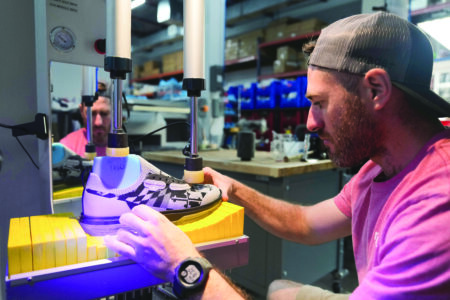Advocates work to fix shortage of mental health professionals, social workers serving rural schools

(Photo courtesy of Pexels - Elizabeth Lizzie)
LANSING — Children in a mental health crisis require treatment.
But they are often turned away due to insufficient resources and professionals spread thin, explained Angela Gardner, the president of the Michigan Association of School Social Workers and a social worker in the Detroit Public Schools Community District.
Not getting help with mental health problems creates barriers to children’s academic success and well being, she said.
The situation has become critical, with shortages of mental health professionals occurring at a local, state and nationwide level, with districts in rural areas most vulnerable to these shortages, according to Gardner.
The first factor contributing to these shortages in rural areas is funding.
“When you’re in a small district you still have to pay overhead costs,” said Alexandra Stamm, the education policy analyst at the Michigan League of Public Policy. “You still have to pay for your principal, your superintendent, but you don’t have the larger number of students to make up for that with a bigger per-pupil amount” to spend.
School districts allocate their funds based on the number of students enrolled. With lower enrollment in rural schools, the amount allocated is less.
Overhead costs in small districts can reduce the money available for other areas of their budget, Stamm said.
To help, the Education Department created a grant program in 2019.
The program provides funds for intermediate school districts’ mental health support services like school social workers.
A 2022-23 legislative report by the Department of Education stated $62.8 million was allocated to intermediate school districts for those services, with $955,300 allocated per intermediate school district.
Funding alone will not solve the problems, Stamm said. Rural communities also face shortages of psychologists and social workers serving children.
“We have the money, we are thankful for the money, but we are just having a hard time finding people to hire,” Stamm said. “The Department of Education is working with other partners to try and address the workforce shortage.”
“The pool of behavioral health professionals is so small,” Stamm said. “You’re getting hospitals, community mental health and schools all trying to hire from this small pool of candidates.”
Another obstacle is that rural communities struggle to draw interest from young professionals, who may find urban areas or glamorous cities more attractive.
Transportation can also be a barrier, according to Gardner.
“Individuals are geographically isolated in the area,” Gardner said. “So the ability to have access to a resource like community health services could be 25 to 30 miles away.”
Scott Hutchins, the School Behavioral Health Unit supervisor at the Education Department, said rural areas are also less likely to have universities nearby that educate future social workers.
Once those students obtain a degree, they are likely to pursue a career in more lucrative, urban areas.
Staffing shortages have also spread social workers thin across school districts, especially in rural communities, said Don Wotruba, the executive director of the Michigan Association of School Boards.
“If you’re in a rural area, you have two or three social workers that serve eight districts, which could be 30 buildings,” Wotruba said.
Turnover among school social workers has also been extremely high, Gardner said.
“Tey’re not able to keep up with the demands of the workload that is required to be a school social worker,” Gardner said.
Alongside turnover, Gardner said she believes the COVID-19 pandemic also contributed to this shortage.
“I believe a lot of people in the workforce never reintegrated back into the brick-and-mortar environment,” she said.
Dorothy Pintar, the school success director and community programs director at the Northeast Michigan Community Service Agency in Alpena, said her program has been adversely affected by the shortage.
“There is a lack of people with social work degrees,” Pintar said. “We are struggling to find school social workers now.”
The agency serves Cheboygan, Alcona, Alpena, Midland, Crawford, Clare. Montmorency, Mecosta and Gladwin counties, among others.
The agency’s school success program removes barriers for students’ academic success. One method is providing counseling services.
Pintar’s program partners with social workers in schools across Northeast Michigan.
“I can see that when we go to a partner with social workers, there is a lack of school social workers in our Northeast Michigan service area,” Pintar said.
Stamm said the Department of Education has an advisory committee which works with intermediate school districts to assess the effectiveness of funding and solutions for other barriers.
It is working with partners to address the workforce shortage through other means.
For example, Wotruba said one conversation about combating the shortage relates to certification and requirements to become a mental health provider in school districts.
Gardner said the Michigan Association of School Social Workers is also working with the National Association of Social Workers to modify the licensing exam to make it easier to get certified while still maintaining standards and best practices.
Hutchins said there has been growth in the number of social workers across the state with the Department of Education grant.
Although there has been an increase in professionals in some rural areas, the additional funding has been more effective in urban areas, according to Hutchins.
Gardner stressed the importance of having readily available social workers.
“The psychosocial stressors that inhibit our children from learning before they hit the school doors are just tremendous,” Gardner said.
“It’s vital that they have a resource readily available to them to address and support breaking down these barriers so they can achieve academic success,” she said.





